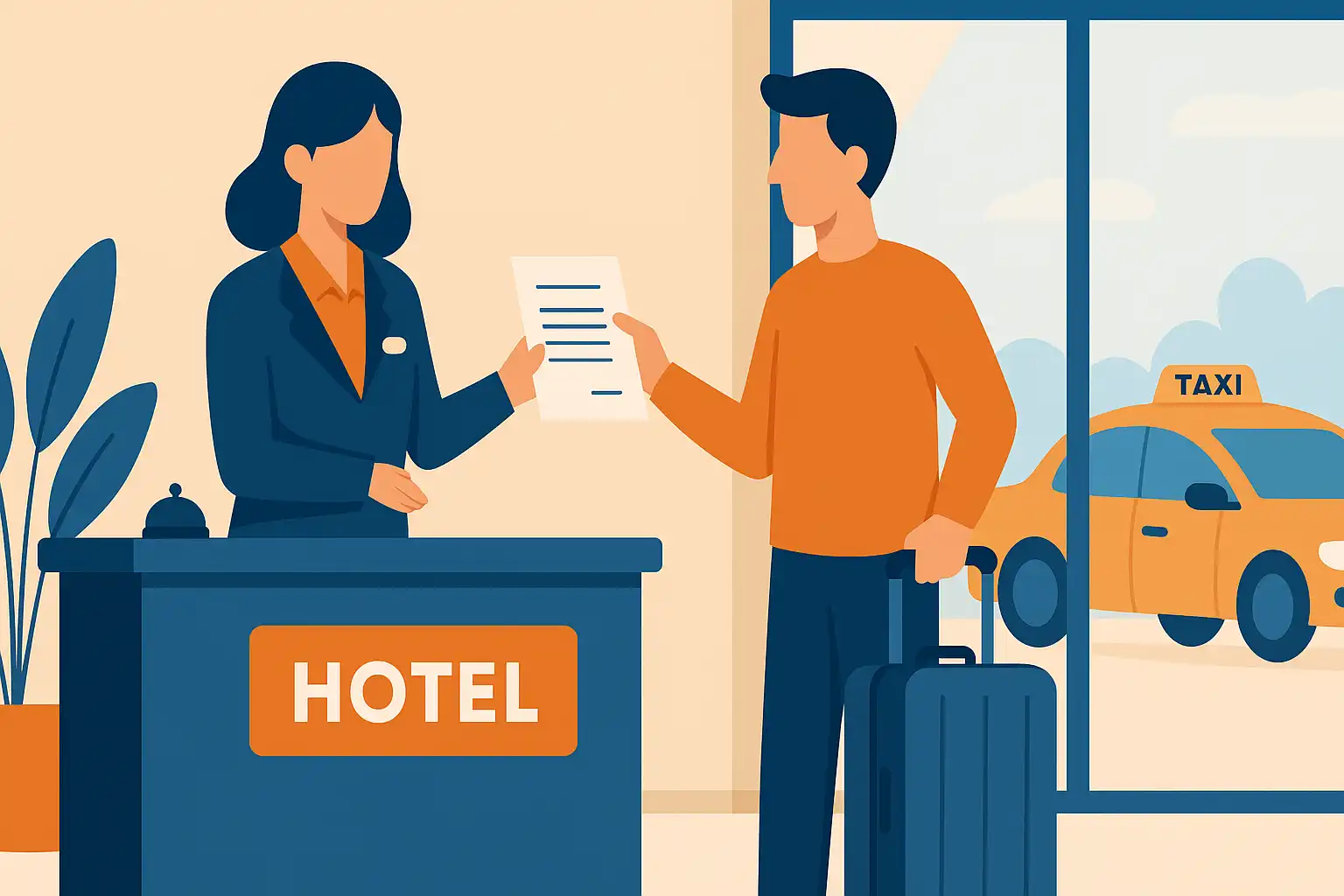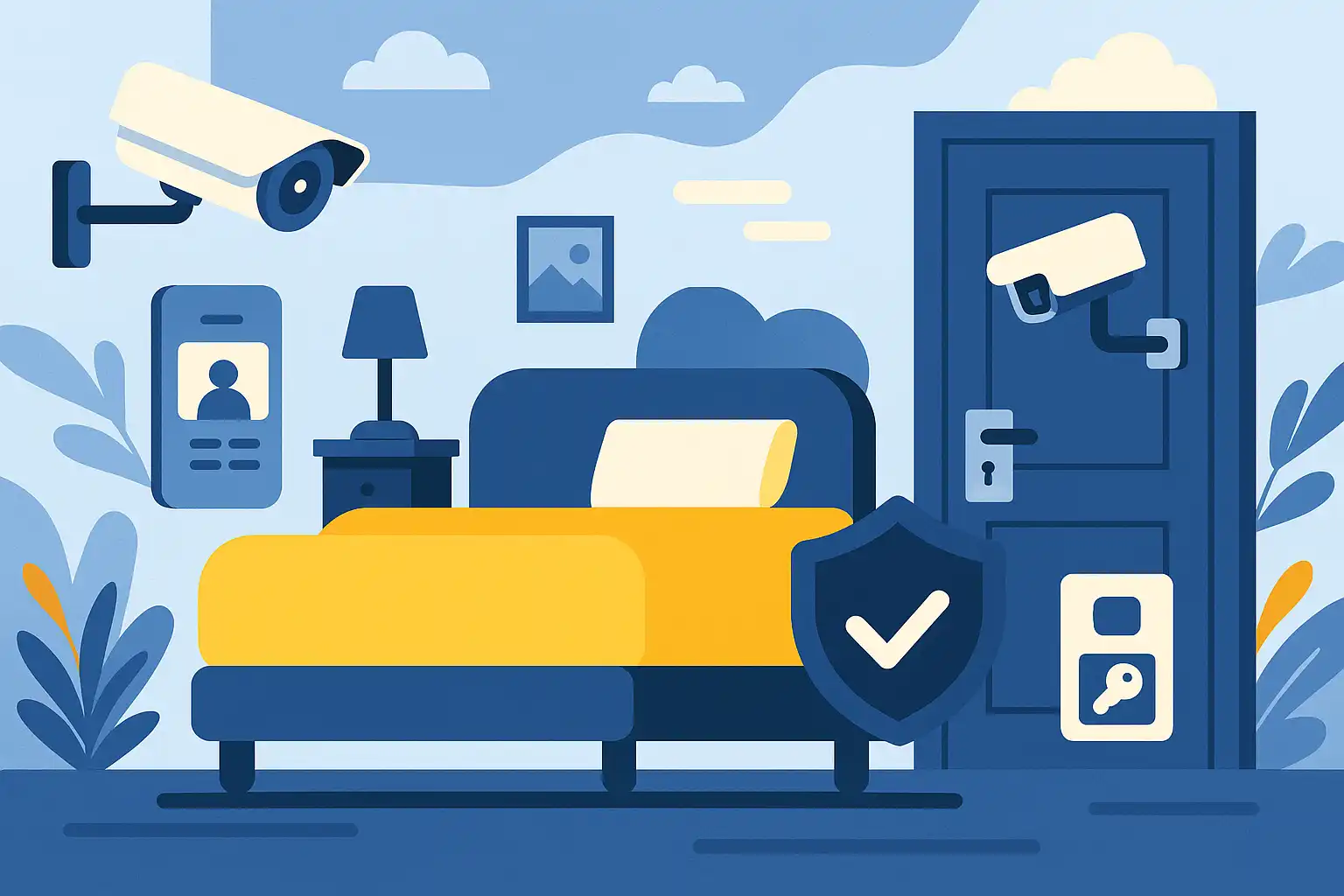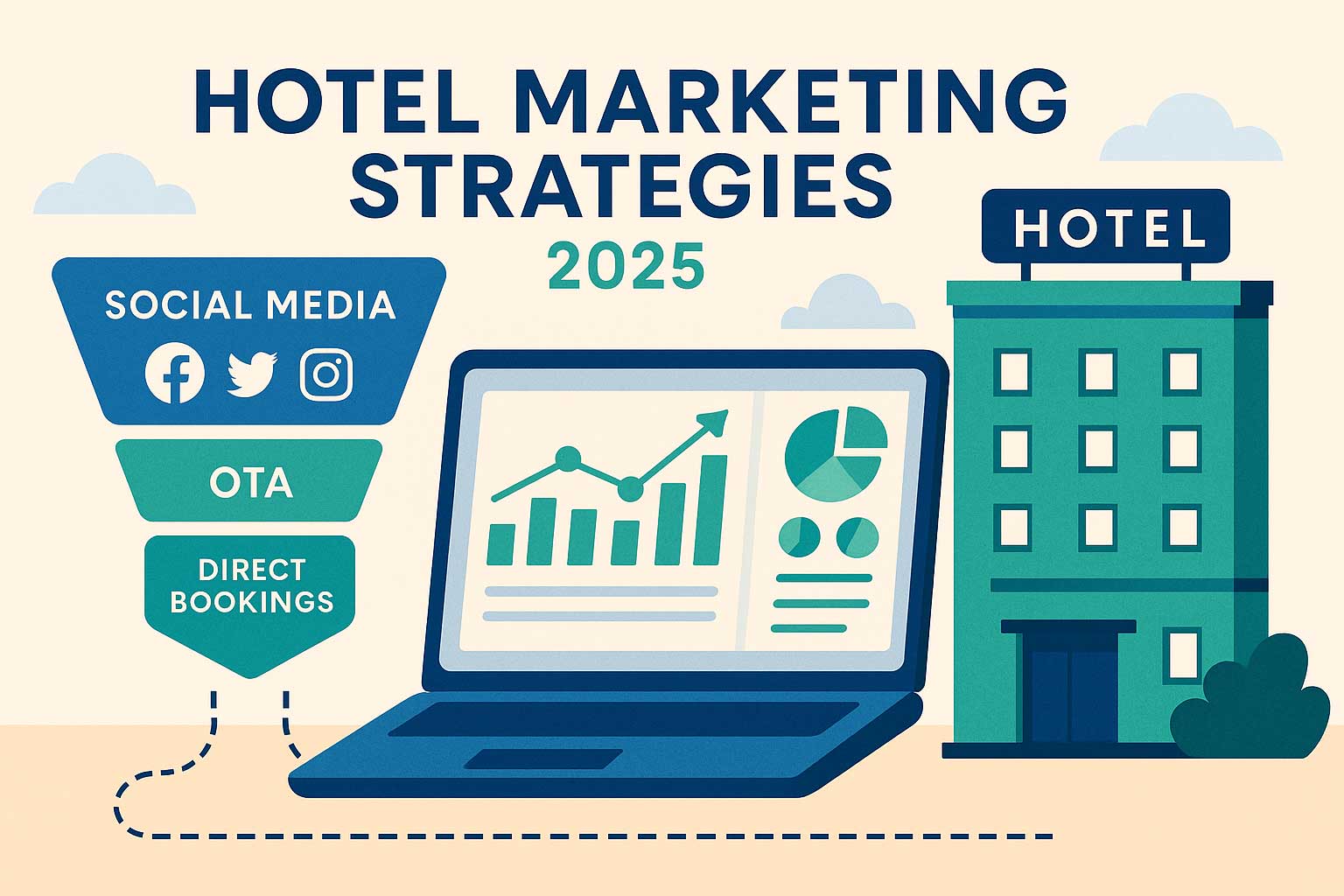Hotel SOP: Guide to Standard Operating Procedures 2025
Aug 28, 2025
 Mika Takahashi
Mika TakahashiPopular Categories
Hotel Technology & InnovationHotel Operations OptimizationDigital MarketingIndustry TrendsRevenue ManagementHospitality Industry
Popular Categories
Trending Post

Hotel Walk Letter Template: Professional Guest Communication

Online Travel Agents: What They Are and How They Work

Hotel Security Systems: Modern Protection Solutions

Hotel Advertising: Complete Guide to Boost Bookings and Revenue

25 Hotel Marketing Strategy Ideas for 2025: Complete Guide

AI Reservation Agent: Revolutionizing Hotel Booking and Guest Experience

PMS Communication: Streamlining Property Management Through Effective Guest Messaging
Table of contents
In today’s bustling hospitality industry, hotels that truly stand out don’t leave their success to chance—they rely on carefully crafted hotel standard operating procedures (SOPs). Research shows that properties with well-established SOPs see guest satisfaction scores rise by 10-15%, while cutting down new employee training time by nearly half. Whether you’re running a cozy boutique hotel or managing a large chain, having solid hotel SOPs is key to running smooth operations and delivering an outstanding guest experience.
This guide covers everything you need to know about creating, rolling out, and managing hotel SOPs that not only streamline your daily tasks but also take your guest service to the next level.
What is a Hotel SOP?
Simply put, a hotel SOP (standard operating procedure) is a written set of step-by-step instructions designed to make sure specific tasks are done the same way across all hotel departments. These clear guidelines help every team member—from rookies to seasoned pros—provide consistent service that meets both your hotel’s standards and your guests’ expectations.
Think of hotel SOPs as the backbone of quality control in hospitality. They cover everything from simple housekeeping checklists to detailed emergency response plans. Unlike informal training or verbal instructions—which can vary from manager to manager—SOPs offer documented procedures that keep service steady, even during busy seasons or staff changes.

Hotel SOPs can take many forms—from simple checklists that housekeeping uses for room cleaning to complex documents outlining how to handle guest complaints or emergencies. Many modern hotels use digital tools that link SOPs with their property management systems, giving staff mobile access and real-time updates.
Most importantly, hotel SOPs help maintain your brand’s promise and keep guests happy. When every staff member follows the same steps for greeting guests, fulfilling requests, and delivering services, your hotel creates a welcoming atmosphere guests can count on every time they visit.
Why Hotel SOPs are Critical for Success
Having detailed hotel SOPs isn’t just about paperwork—it’s about real results that boost your bottom line and make your operations run smoothly. Hotels with solid SOPs report noticeable improvements in several key areas, proving these procedures are essential for success in today’s competitive market.
First, consistent service is a major win. Whether it’s peak season or you’re dealing with staff turnover, SOPs ensure your guests receive the same high-quality experience no matter who’s on duty. After all, guest expectations don’t change just because your team does.
SOPs also help you stay on the right side of the law. Up-to-date procedures for fire safety, food hygiene, and emergencies protect your hotel from fines and legal troubles. Considering that non-compliance costs the industry billions each year, having well-documented SOPs is a smart way to safeguard your business.
Training new staff becomes much more efficient with SOPs. New hires learn 40-60% faster when following clear, documented processes compared to traditional on-the-job training. This means lower training costs and quicker integration of new team members.
Reducing errors is another big plus. When staff stick to documented steps for things like room assignments, guest check-ins, and inventory, mistakes—and the resulting guest complaints—drop significantly. Hotels with comprehensive SOPs see error rates fall by 15-20% compared to those without formal procedures.
Finally, SOPs create a transparent framework for evaluating staff performance. Clear, documented expectations help managers and employees alike understand what success looks like, leading to fairer assessments and happier teams.
Essential Components of Effective Hotel SOPs
To make hotel SOPs truly useful, they need to be well-structured and easy to follow. Each SOP should guide staff through complex tasks while still allowing some flexibility for unique situations.
Start with clear objectives. Explain what the SOP aims to achieve and why each step matters for guest satisfaction and operational efficiency. For example, a front desk SOP might emphasize delivering quick, personalized service that leaves a great first impression.
Define the scope next. Spell out which departments, roles, and scenarios the SOP covers. This helps prevent confusion and clarifies who’s responsible for what. It’s also good to note any exceptions or special cases.
The heart of any SOP is the step-by-step procedures. These should be detailed enough to help new staff but concise enough for experienced employees to reference quickly. Each step should include clear standards to measure quality and performance.

Make sure to list all necessary tools, equipment, and materials so staff can prepare properly before starting tasks. For housekeeping, this might mean specifying cleaning supplies, safety gear, and inspection forms.
Include documentation guidelines too—what needs to be recorded, how long to keep records, and who can access them. This accountability helps with ongoing improvement and regulatory compliance.
Finally, set a review schedule. Quarterly updates and annual comprehensive reviews keep SOPs current, allowing you to incorporate guest feedback, operational changes, and new tech.
How to Develop Hotel SOPs: 5-Step Process
Creating effective hotel SOPs takes a thoughtful approach that involves your team and thorough testing before going live. This 5-step process helps ensure your SOPs meet real operational needs and get staff buy-in.
First, identify priority areas. Focus on guest-facing tasks like front desk operations, housekeeping, and food service—they usually offer the biggest impact.
Don’t forget high-risk activities like emergency protocols, cash handling, and safety procedures. These need detailed SOPs to protect guests and staff and keep you compliant with local laws.
Also, look at common questions and training challenges that slow down your managers or cause inconsistent service. These are prime spots for SOPs.
Consider seasonal and special event procedures too. Documenting holiday service or conference setups helps your team deliver consistent experiences no matter when or what’s happening.
Next, map out current processes. Watch how tasks get done during different shifts and busy times. You might spot informal shortcuts or bottlenecks that need fixing.
Write down existing best practices from your experienced staff. Their knowledge is valuable and should be standardized rather than lost.
Identify inefficiencies or confusing handoffs between departments that frustrate guests or waste time.
Gather input from supervisors and frontline employees—they know the day-to-day challenges best and can help craft practical SOPs.
Department-Specific Hotel SOP Examples
Every hotel department has unique workflows but all should work together smoothly to create a great guest experience. Here are some examples of how SOPs can shape key areas.
Hotel Front Desk SOPs
Guest check-in is the first impression—make it count. Hotel front desk SOP here include verifying IDs securely while still being warm and welcoming, assigning rooms based on guest preferences, and updating systems accurately.
Upselling should feel natural, not pushy. Provide clear guidance on how to present room upgrades, amenities, and services in ways that genuinely enhance the guest experience.
Check-out procedures cover billing accuracy, updating room status, and gathering guest feedback—all aimed at a quick and pleasant departure.
Reservation management SOPs handle changes, cancellations, and overbooking with clear escalation paths to keep guests happy and protect revenue.
Handling guest complaints requires hotel operations protocols for quick responses, escalation of serious issues, and follow-up tracking to improve service.
Emergency procedures for medical, security, or property incidents must specify roles, communication steps, and documentation, backed by regular training drills.
Housekeeping Department SOPs
Room cleaning SOPs are detailed and critical, often including thorough checklists that cover timing, quality, and safety standards to maintain spotless guest rooms.
Housekeeping SOPs outline the cleaning sequence to maximize efficiency without cutting corners, respect guest belongings, and complete quality checks before marking rooms ready.
Linen and amenity management SOPs track inventory, control quality, and schedule replacements to ensure guests always receive fresh, high-quality items.
Lost and found procedures document item handling, storage, and guest communication to provide efficient recovery services.
Deep cleaning schedules for carpets and upholstery specify frequency and methods to keep the property looking its best and prolong furniture life.
Chemical safety and equipment maintenance protocols protect staff and ensure effective cleaning while complying with regulations.

Food and Beverage SOPs
Food safety SOPs follow HACCP guidelines and local laws to keep food prep, storage, and service safe and hygienic.
Menu prep standards cover portion sizes, presentation, and cooking methods to maintain quality and control costs.
Inventory SOPs manage receiving, storage, and rotation to prevent waste and ensure ingredient freshness.
Service protocols for restaurants, room service, and banquets set timing, presentation, and guest interaction standards for consistent experiences.
Alcohol service SOPs include ID checks, responsible serving, and incident documentation to protect guests and the hotel.
Implementation Strategies for Hotel SOPs
Rolling out hotel SOPs successfully means planning carefully and supporting your team through the change.
Start with a phased rollout—focus on high-impact departments like front desk or housekeeping first to show quick wins and build momentum.
Training should be hands-on, with role-playing, shadowing, and tests to ensure everyone understands and can follow procedures.
Use digital tools like mobile apps or cloud systems to give staff easy access to SOPs and track compliance.
Regular audits and reviews help spot areas needing tweaks and keep everyone on track.
Address staff concerns by communicating benefits clearly, involving them in SOP development, and recognizing their efforts.
Best Practices for SOP Management
Maintaining SOPs is an ongoing effort, not a one-time task.
Schedule regular reviews—monthly spot checks and quarterly updates—to keep procedures relevant.
Encourage staff feedback through meetings or suggestion boxes to find practical improvements.
Use version control to prevent confusion about which SOPs are current.
Track performance metrics like compliance rates and guest satisfaction to measure impact.
Use incident reports and guest feedback to continuously refine procedures.

Common Challenges and Solutions
Rolling out hotel SOPs isn’t without hurdles.
Staff may resist change fearing micromanagement or punishment. Overcome this by explaining benefits, involving them in development, and showing how SOPs support—not replace—their judgment.
Keeping SOPs updated grows harder as your library expands. Assign clear responsibility, use reminders, and make it easy for staff to suggest updates.
Language differences can cause misunderstandings. Use visuals, multilingual materials, and buddy systems to help.
New technology can be intimidating. Introduce digital tools gradually with user-friendly training.
Consistency across shifts needs clear handover protocols and regular audits.
Technology Tools for Hotel SOP Management
Today’s hotels benefit from digital platforms that simplify SOP distribution, tracking, and updating.
Tools like Prostay, GoAudits, and Opera offer centralized management with department-specific customization.
Mobile apps let staff access SOPs anywhere, even offline, syncing updates when connected.
Learning management systems integrate training with SOP documentation, tracking progress and certifications.
Integration with property management systems keeps SOPs aligned with current operations.
Though digital systems require upfront investment, they save money long-term through efficiency and reduced training costs.
Measuring SOP Effectiveness
To know if your SOPs work, track key metrics.
Look at guest satisfaction surveys and reviews for direct feedback.
Measure operational efficiency through task completion times and error rates.
Monitor compliance rates and staff performance.
Analyze financial impacts like training costs and revenue changes linked to SOP use.
Benchmark against industry standards and competitors to spot improvement areas.
Hotel SOPs are more than documents—they’re the foundation for exceptional guest experiences, efficient operations, and lasting success.
Start with your highest-impact areas, involve your team, and keep SOPs evolving with your hotel’s growth and guest needs.
Your guests deserve the consistent quality that only well-crafted SOPs can deliver. Begin building your comprehensive SOP program today and watch your guest satisfaction, operational efficiency, and team performance soar.
